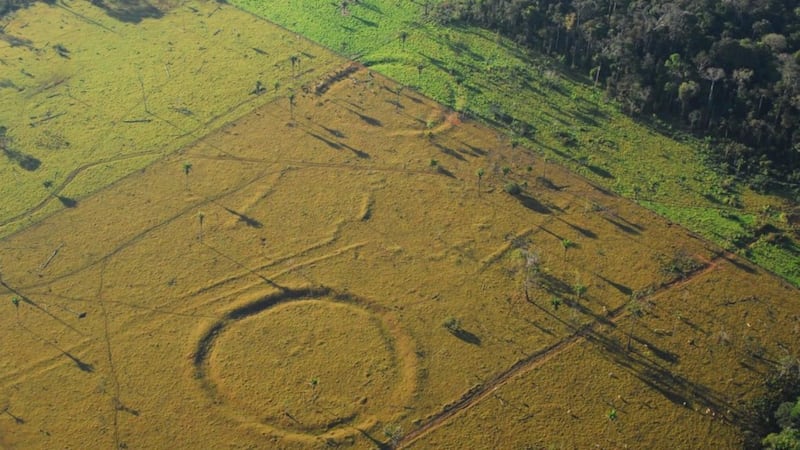Scientists have found ancient mysterious earthworks resembling the circular pattern of Stonehenge in the Amazonian rainforest that suggest humans may have lived in the region centuries earlier than thought.
Researchers from Universities of Exeter and Reading in the UK, and the University of Sao Paulo in Brazil, discovered more than 450 large geometrical ‘geoglyphs’ that are believed to be at least 2,000 years old.
The earthworks remained hidden amongst the rainforest trees – in the ditched enclosures in Acre state of the western Brazilian Amazon taking up roughly 13,000 km square of space – until modern deforestation allowed the discovery.
The findings suggest indigenous people lived in the Amazon long before European people arrived in the region.
Researchers say they still haven’t determined the function of these mysterious sites but believe they are unlikely to be villages.
This is based on the fact that archaeologists recovered very few artefacts during excavation – and scientists say the layout of the geoglyphs does not suggest they were built for defensive reasons.
They believe these places were not used regularly, making them a possible ritual gathering place, much like the Maya pyramids of Central America or Britain’s Stonehenge.
Dr Jennifer Watling, one of the researchers involved in the project, said: “The fact that these sites lay hidden for centuries beneath mature rainforest really challenges the idea that Amazonian forests are ‘pristine ecosystems’.
“We immediately wanted to know whether the region was already forested when the geoglyphs were built, and to what extent people impacted the landscape to build these earthworks.”
After reconstructing 6,000 years of vegetation and fire history around the two geoglyph sites using state-of-the-art technology, researchers found people living there made changes to their environment by focusing their attention on economically valuable tree species such as palms, which they describe as something that resembles a “prehistoric supermarket of useful forest products”.
Evidence also suggests forests in the surrounding areas “have a strong legacy of these ancient agroforestry practices”.
Watling said: “Despite the huge number and density of geoglyph sites in the region, we can be certain that Acre’s forests were never cleared as extensively, or for as long, as they have been in recent years.
“Our evidence that Amazonian forests have been managed by indigenous peoples long before European Contact should not be cited as justification for the destructive, unsustainable land-use practised today.
“It should instead serve to highlight the ingenuity of past subsistence regimes that did not lead to forest degradation, and the importance of indigenous knowledge for finding more sustainable land-use alternatives.”
The research is published in the Proceedings of the National Academy of Sciences.








